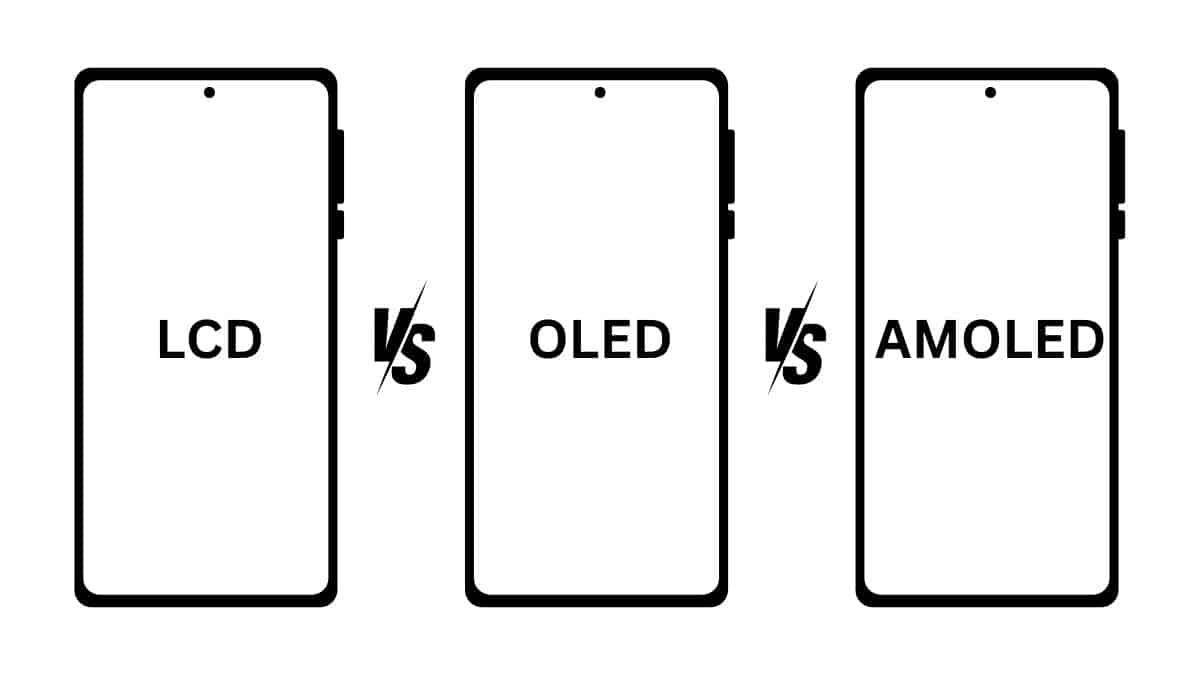HIGHLIGHTS
- Introduction to the Smartphone Display
- In this article, we see the key difference between LCD, OLED & AMOLED displays on the phone
- Benefits of LCD VS OLED VS AMOLED Displays on Phones

The incorporation of large touch displays totally transformed mobile phone operation and proper use. Mobile phones became smartphones. Today, they hold prizes in the market share. As happened with the following generations of computers and MP3s, with each new generation of smartphones, the technology employed on the device enhanced. Displays are one of the additional elements that have undergone significant evolution as part of Second Life’s functionality. The displays of modern smartphones can be characterized as extremely efficient in the aspects of their resolution, size, picture, and functions. The development possibilities appear to be everything but constrained.
Table of Contents
Smartphone Display
A mobile display is the screen or VGA part of a mobile device or any portable device like, a mobile phone, iPad, and the like. It is the component where users touch, create, and receive perceivable interactive feedback such as visuals. An enormous number of various mobile displays are distinguished for size, resolutions, technologies, and options. Often, while purchasing a mobile phone, we come across terms such as IPS LCD display, TFT LCD display, OLED display, Super AMOLED display, and others.
Key Difference between LCD VS OLED VS AMOLED Displays on Phones
LCD Display
LCD (Liquid Crystal Display) displays consist of a matrix of Liquid Crystals. Liquid Crystals do not emit light themselves and are reliant on some form of backlight to illuminate the whole display. As a result, LCD displays can be very visible in direct sunlight.
- Backlighting: Rest behind a light source and thus deliver less intense color and deeper black because of that.
- Colour Accuracy: In general, the chromaticity as well as light output is satisfactory although these may not be optimal being a lower-end model.
- Brightness: Typically has higher brightness than OLED and AMOLED displays because of which they are not as impacted by light glare.
- Power Consumption: Generally runs at a higher utilization rate as even for the part of the structure that is not being utilized the lights will be on.
- Lifespan: This is mostly longer-lasting than an IPS screen and has significantly fewer tendencies to get screen burn-in.
- Cost: In general, LG has less cost associated with the manufacture of the glow compared to OLED and AMOLED.
OLED Display
This is the newest technology for the showing of mobiles and monitors. Regarding the OLED tech, you will come across an organic substance that is situated between two metal foils or layers an anode, and a cathode, and these are sandwiched by a glass upper covering or seal and the lower substrate glass plate.
- Self-Illuminating Pixels: Pixels are then individually lit, and can produce real blacks while at the same time, the peak luminosity of the colors is even higher.
- Contrast: This is because it can offer a zero level of any pixel, This is the primary reason that LCD monitors have higher contrast ratios than that tube technology.
- Power Consumption: Fewer power consumptions, which in most instances are evident during the display of low contrast color or black screen in video gaming, picture and audio, and movie applications.
- Thinness: Could be made thinner and more flexible than LCDs for they do not require the backlight.
- Response Time: Faster with reactions and ideal for fast movements, reduces distortions.
- Viewing Angles: A clearer image to that of the less advanced TN panel display that alters its colors when viewed from the side.
- Lifespan: Real organic material can degrade over a certain period and that reduces the product’s life cycle and leads to the occurrence of items such as burn-in.
AMOLED Display:
It’s important to differentiate AMOLED which is a kind of OLED display for mobiles and is already securing its place in the high-end smartphones. From the AMOLED screens we can get to know many things that are present on the OLED such as brilliant colour reproduction, light weight, better battery efficiency, appropriate brightness and so on.
- Improved OLED: There is a new OLED known as AMOLED, which has higher pixel control than other OLEDs.
- Power Efficiency: A little more efficient than OLED even though efficiency is, of course, somewhat higher with dark themes and always-on features.
- Brightness and Colour: In most times the panels are even higher and the tones are sharper and deeper than a traditional OLED screen.
- Thinness and Flexibility: From what is gathered, it can be made thinner and more flexible than OLEDs; a factor that makes it ideal for curved as well as foldable solutions.
- Response Time: Avid latencies to that of contact times that are best suited for the display devices that have high rates of refreshing and are suitable for various online activities.
- Cost: In general the element is a bit expensive relative to the other flat panel displays – the LCD and the standard OLED since the process of manufacturing the element is slightly more complicated.
Benefits of LCD VS OLED VS AMOLED Displays on Phones
Benefits of LCD Displays
- Cost-Effective: Generally, building phones with an LCD screen may be comparatively cheaper than constructing phones with an OLED screen hence the variety of phones established with the former is broader.
- Bright and Visible in Sunlight: It is generally of higher brightness than OLED and AMOLED which is useful when used in areas that are under direct sunlight.
- Color Accuracy: Sometimes provides good color rendering that is suitable for those tasks that require a correct color view.
- No Burn-In: Somewhat better in terms of avoiding screen burn-ins compared to OLED and AMOLED screens that is why it is more appropriate for usage in the long term.
- Long Lifespan: This tends to have a longer lifespan as compared to the other categories because there is unlikely to be integration of organic products that are known to rot.
- Consistent Performance: This it done after claiming that the area that the luminaire illuminates has a uniform light intensity and color temperature after a certain period of operation.
Benefits of OLED Displays
- True Blacks and High Contrast: Each pixel emits its own light, allowing for true blacks (as pixels can be turned off completely) and superior contrast ratios.
- Vibrant Colors: Can produce more vivid and vibrant colors, enhancing the visual experience.
- Power Efficiency: More power-efficient, especially when displaying darker colors or black backgrounds, as individual pixels can be turned off.
- Thin and Flexible: This can be made thinner and more flexible than LCDs, enabling innovative designs like curved and foldable screens.
- Fast Response Time: Faster response times are ideal for high-speed motion, reducing motion blur.
- Better Viewing Angles: Offers better viewing angles with less color shift when viewed from different angles.
Benefits of AMOLED Displays
- Enhanced OLED: Builds on the benefits of OLED with an active matrix for even better control over each pixel.
- Superior Power Efficiency: Even more power-efficient than standard OLED, particularly with always-on displays and dark themes.
- Brighter and More Vivid: Typically brighter with more vivid and saturated colors, providing an enhanced visual experience.
- Ultra-Thin and Flexible: This can be made extremely thin and flexible, supporting the development of innovative device designs like foldable and curved screens.
- High Refresh Rates: Supports very fast response times and high refresh rates, which are beneficial for gaming and smooth scrolling.
- Always-On Display: Efficiently supports always-on display features without significant battery drain, making it useful for notifications and time display.
Conclusion:
When we are talking about smartphones, the display is the major part that can show the overall graphics and experience of the phone for the users. Smartphone companies continuously work on it and try to make the best display phone. Among them, Samsung is the best company for the best display phones. In this article, we listed the differences between LCD, OLED & AMOLED with their benefits on smartphones.
FAQS
Which type of display is best for mobile?
Most display experts and consumers agree that OLED displays are the world’s best smartphone displays. The best smartphone OLED displays are the Super AMOLED displays produced by Samsung Display, but other OLED producers (such as LG and BOE Display) are also producing high-quality OLEDs.
Which screen is strong for mobile?
AMOLED is considered better than OLED for phone displays. The reason is that AMOLED builds upon OLED technology by incorporating an active wiring matrix of transistors for individual pixel control instead of using organic materials between conductors of an LED.


